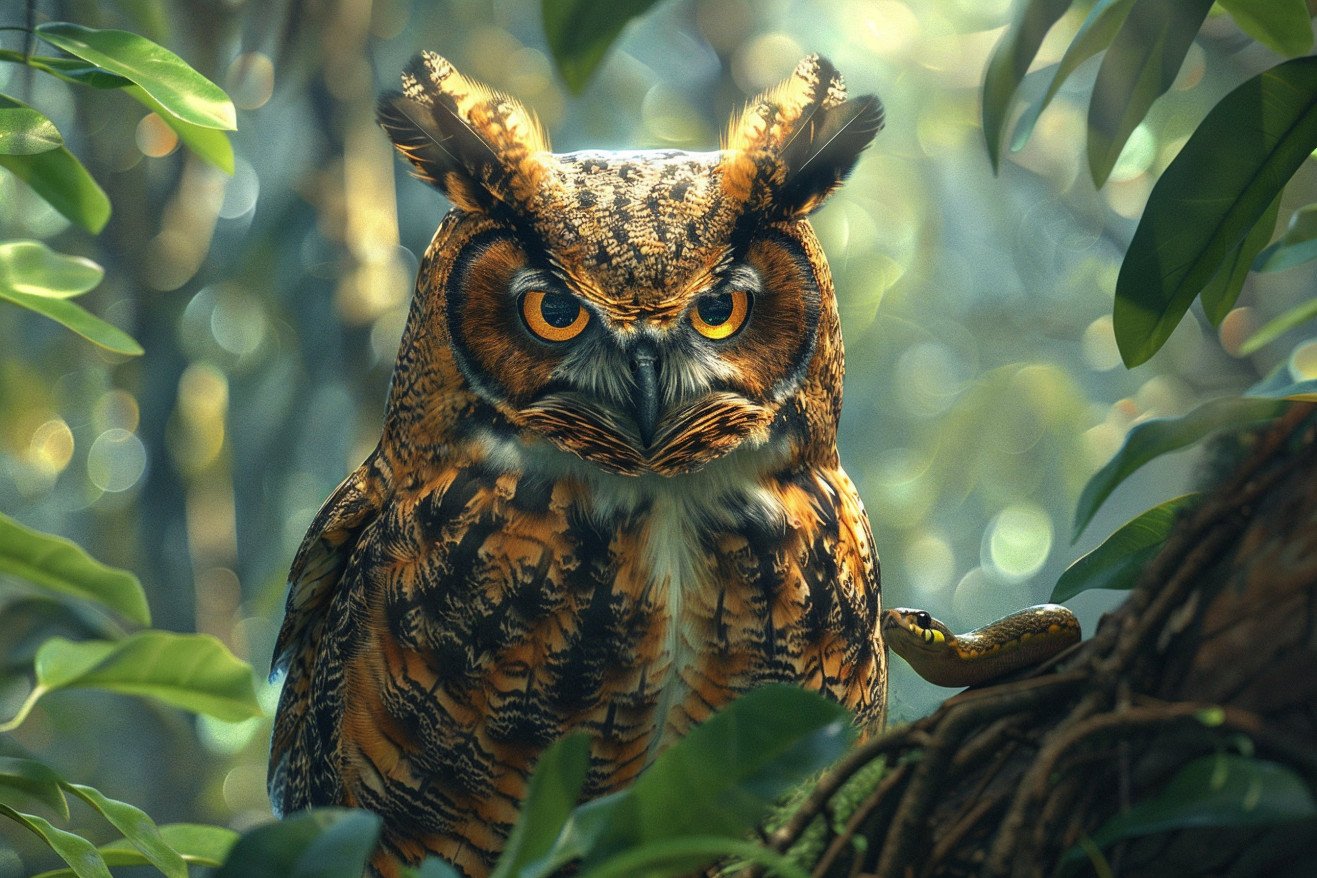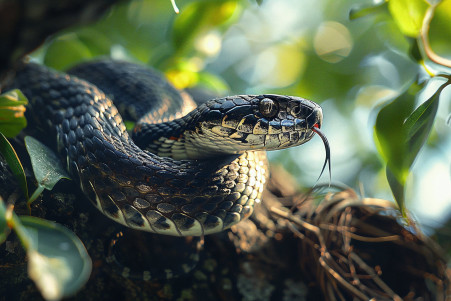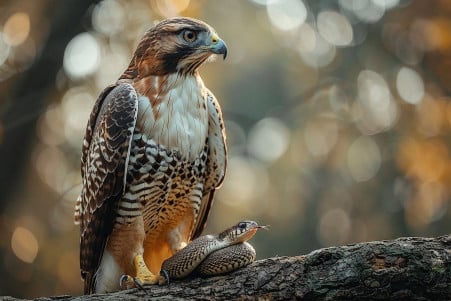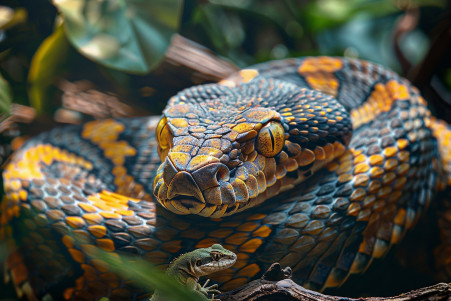What Do Owls Eat? A Look at the Hunting Behavior of Owls
29 February 2024 • Updated 27 February 2024

Owls are mysterious hunters with their silent flight, but you may be wondering if they eat snakes. The answer is yes, owls eat snakes. The Great Horned Owl, Eastern Screech Owl, Barred Owl, and Burrowing Owl are just a few of the species that eat snakes as part of their diet. However, whether or not an owl will eat snakes depends on the owl’s size and the environment it lives in.
This article will use ornithological and ecological research to provide a more in-depth look at the predator-prey relationship between owls and snakes. This will involve looking at the hunting behavior and diet of different owl species, as well as the ways that snakes defend themselves against birds of prey.
By drawing on research from the biological, ecological, and animal behavior sciences, we hope to give a fuller view of this fascinating predator-prey relationship and how it impacts the ecosystems where it takes place.
Do owls eat snakes?
Cracking the Predatory Puzzles: What Determines the Snakes That Owls Eat?
There are a number of important considerations when trying to understand the diet of owls. For example, ResearchGate explains that larger owls are more likely to eat a wider variety of snake sizes because of their larger body size.
However, prey availability is just as important and is impacted by environmental factors like temperature and vegetation cover. These factors, especially temperature and vegetation cover, impact the presence of snakes in an area, which in turn impacts the likelihood that they will be eaten by owls.
According to ScienceDirect, environmental factors have a significant impact on the availability of snakes, which in turn impacts their distribution and the likelihood that they will be included in the diets of local owls. Meanwhile, PubMed introduces the idea of taxonomic specialization, which means that some owls are more likely to eat certain types of prey, such as snakes, regardless of other factors.
Together, these studies show that the selection of prey by owls is a complicated process that is impacted by both the owls’ natural preferences and the ecological context of their hunting grounds. This means that owls’ physical and sensory adaptations must be perfectly honed to help them succeed as hunters in a variety of habitats.
Highly Specialized Predators: Owls’ Specialized Adaptations for Snakes
Owls are highly specialized predators, and their adaptations have made them especially skilled at hunting snakes. One of their most important adaptations is their incredible night vision.
As explained by the Schlitz Audubon Nature Center, an owl’s eyes are large in relation to the size of its skull, which means that more light can get to the retina, which is packed with light-sensitive rods. This makes owls especially good at seeing snakes in the dark.
In addition, the British Trust for Ornithology explains that owls have asymmetrical ears, which allows them to locate the exact position of a snake moving through the grass with amazing precision. This means that even if a snake is hidden from view, an owl can still make a successful strike.
Owls’ silent flight also makes them especially good at hunting snakes. According to the Owl Research Institute, owls have special feather adaptations that allow them to break up air flow, which means that they can attack their snake prey without being heard.
Finally, the strength of an owl’s talons and beak is important when it comes to making a kill. An owl’s talons are used to catch and hold its prey, and in the case of snakes, to subdue them.
Meanwhile, an owl’s beak is used to kill and eat its prey. Some owl species, like the Great Horned Owl, are especially good at hunting snakes, which underscores the strength of these evolutionary adaptations.
Combined, these adaptations make owls some of the most successful predators in their environments, and they play a key role in maintaining the balance of their ecosystems.
Deciphering the Diverse Diet: Owls and Their Prey
Owls have a diverse diet that matches the range of environments they live in, but many species rely on small mammals such as mice, voles, and shrews. Owls are also opportunistic hunters, so they will eat snakes when they can. This is especially true for the species that eat snakes, including the Great Horned Owl, Eastern Screech Owl, Barred Owl, and Burrowing Owl.
The likelihood of an owl preying on snakes is determined by the owl’s size and the environment it lives in. Larger owls like the Great Horned Owl have the strength to take down larger and more diverse prey, including the snakes that live in the wide range of North and South American habitats they inhabit.
On the other hand, smaller owls like the Eastern Screech and Burrowing Owls eat snakes that are smaller and easier for them to catch, which are the smaller species that live in the environments they call home.
The Woodland Trust has gone even further in studying the diets of owls by looking at the prey remains found near nests and examining pellets, which are a physical record of what owls have eaten, including the scales and bones of reptiles.
This has provided concrete proof that snakes are a significant part of the diet of certain owls and has helped to confirm the predator-prey relationships that are so important to the balance of nature.
Owls: Keepers of the Ecosystem’s Balance
Owls are important regulators of ecosystems and often act as a check on snake populations. By preying on snakes, owls help ensure a healthy predator-prey relationship, which is important for maintaining biodiversity. "Bird Watching Today" explains that although the impact of owls on snake populations is not the only factor that determines the size of snake populations, it is an important part of the many interactions that make up an ecosystem.
The larger ecological impacts of owl predation are many. According to Wild Habitats, owls help maintain biodiversity and healthy habitats by preying on snakes. This predation also helps control pests, which in turn helps maintain the resilience of the ecosystem and helps with nutrient cycling by regurgitating undigestible parts in pellets.
The relationship between owls and snakes is an example of an evolutionary arms race, with snakes evolving a variety of ways to avoid being eaten by owls. A study on PMC shows that species in a food web are all connected and that owls are important in the dynamics of prey species, including their indirect effects on the behavior and evolution of snakes and other prey species.
As a result, owls are important not only in maintaining populations but also in helping to shape ecological change and balance, which is important for a healthy ecosystem.
The Art of Evasion: Snake Defensive Strategies Against Owls
In the complex predator-prey interaction, snakes have developed a range of tactics to escape the keen vision of owls. A paper in Frontiers in Zoology observed that the Greek Meadow Viper alters its behavior to avoid periods when bird predators are most active, indicating that snakes can modify their actions in a way that reduces their chance of predation.
California Herps details how snakes use camouflage to hide from predators and how they use a defensive coiling position to protect their vital organs and potentially discourage an attacking owl.
Venom, a classic snake defense, serves as a strong deterrent, although it’s more effective in some species than others, according to Britannica. While some owls may be scared off by the threat of venom, others are not, and some are even immune to the effects of snake venom.
The effectiveness of these defenses is also impacted by the environment; the more cover there is, the more effective camouflage is, while the more open the area, the more effective defensive coiling is.
This arms race has shaped the ways that snakes avoid being eaten, leading to the development of behaviors and physical traits that help them avoid being eaten by owls. The fragile balance of this relationship ensures that both predator and prey continue to evolve as they respond to each other in an endless cycle of action and reaction.
In Summary: Owls, Snakes, and the Web of Life
From a predator-prey perspective, it is clear that several owl species, most notably the Great Horned Owl and Eastern Screech Owl, will eat snakes, but only under certain circumstances. These circumstances are based on the owl’s size, the availability of other prey, and the specific details of their habitats.
The relationship between owls and snakes is a perfect example of the adaptations and evolutionary strategies that enable both animals to fulfill their roles in the web of life.
The ecological importance of this relationship is profound. By controlling snake populations, owls help maintain the health and diversity of their ecosystems. In turn, snakes have evolved a number of adaptations to help them avoid their avian predators, leading to an evolutionary arms race that has shaped both groups.
As scientists continue to learn more about these relationships, the need for ongoing conservation of both owls and snakes is increasingly evident. By protecting and preserving these animals, we ensure the continued existence of the ecological balance and the diversity of life that sustains the natural world.


